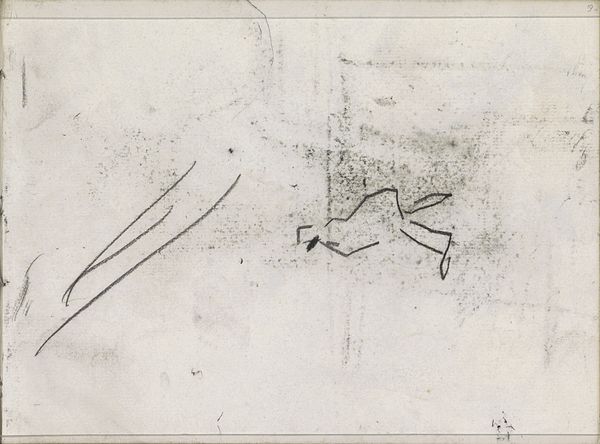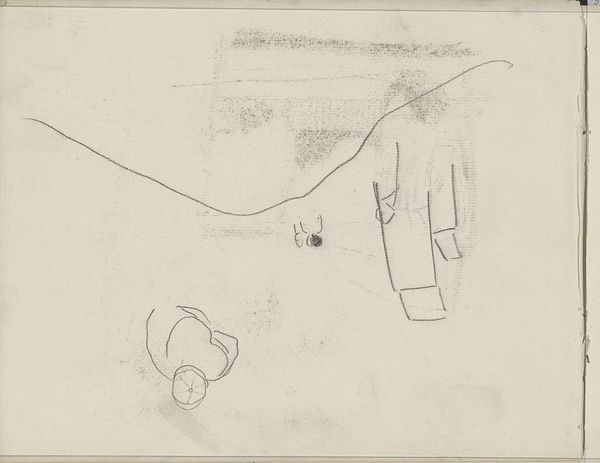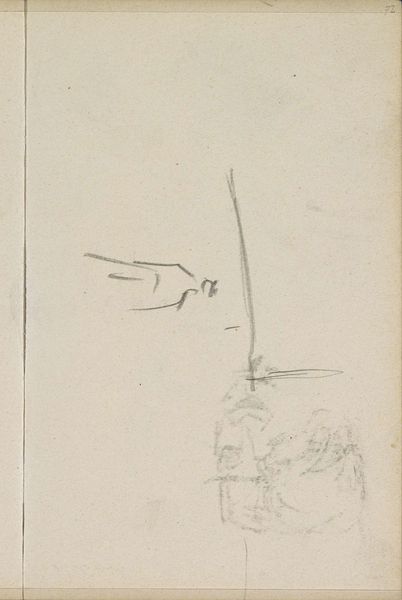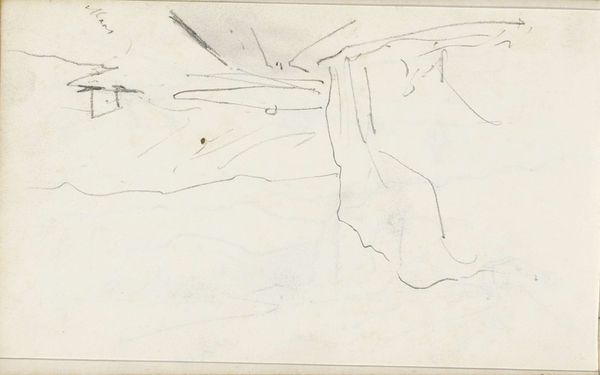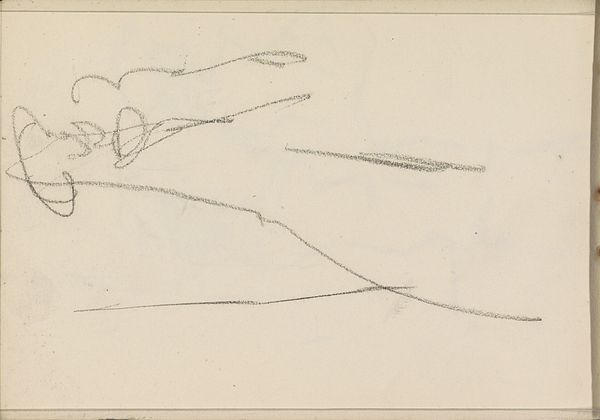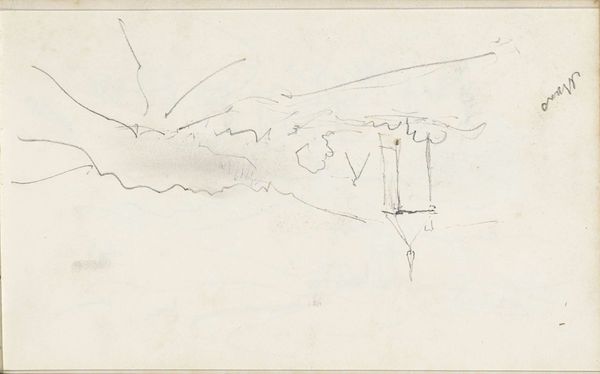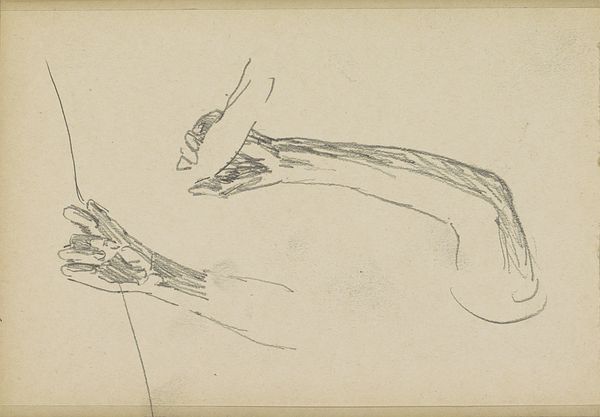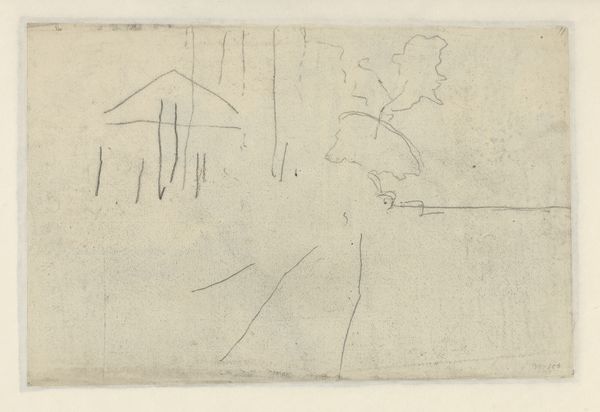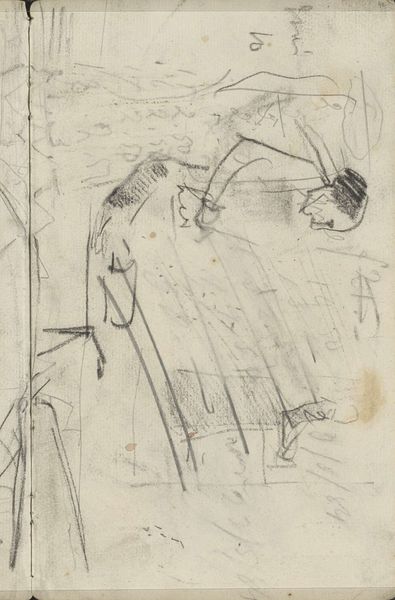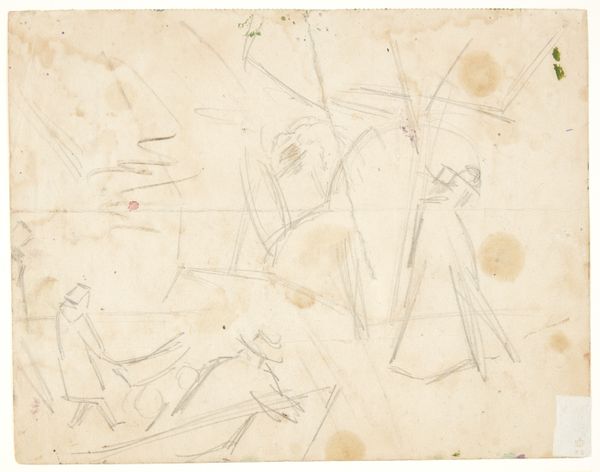
drawing, paper, pencil
#
drawing
#
pencil sketch
#
asian-art
#
etching
#
ukiyo-e
#
figuration
#
paper
#
pencil
#
line
Dimensions: height 85 mm, width 85 mm
Copyright: Rijks Museum: Open Domain
Curator: At first glance, this looks deceptively simple. Editor: It has a kind of quiet energy, doesn’t it? Restrained, but full of potential. Curator: Indeed. We’re looking at "Schetsblad," or "Sketch Sheet," an unassuming work on paper rendered in pencil. It’s attributed to Utagawa Hiroshige, dating sometime between 1807 and 1858. It resides here, in the Rijksmuseum. Editor: Attributed is doing a lot of work here. The looseness of the drawing does reflect Hiroshige's interest in everyday life. How did such preparatory sketches shape woodblock prints from the ukiyo-e school, where a fleeting moment would then be set permanently in the world through a more mediated vision? Curator: These were indeed initial explorations, and pencil allowed him an immediacy, unconstrained by the formal processes required for printing. The role of sketches within the rigorous ukiyo-e tradition speaks to the division of artistic labour in print production, between the initial idea, final sketch, block carvers and printers. Hiroshige’s position is a perfect lens through which to question artistic roles. Editor: It’s fascinating to see such an intimate glimpse into his process, it raises issues around authenticity and labour. Who truly owns a particular style? How does the sketch challenge conceptions of authorship that hinge solely on completed artworks, especially within a globalized, and increasingly commodified market, so prevalent at this period of industrialisation? The subject appears as everyday utensils and a reed flower. Curator: That everyday quality reinforces Hiroshige's legacy: his deep connection to the spaces and people around him, viewed with the social awareness reflected throughout his larger body of prints. This glimpse allows a vital humanizing counterpoint. It highlights the context necessary in our consideration of the artist. Editor: Precisely. It reminds me that art is often as much about the process, with all its contingent, historical relations, as it is about the polished finished product and perceived genius. Curator: Ultimately, examining this subtle piece reveals layers of artistic procedure in 19th century Japanese society, where it re-conceptualizes established narratives surrounding its production and social impact. Editor: Agreed, these preliminary works help us reconsider the artist’s complete body of work.
Comments
No comments
Be the first to comment and join the conversation on the ultimate creative platform.


